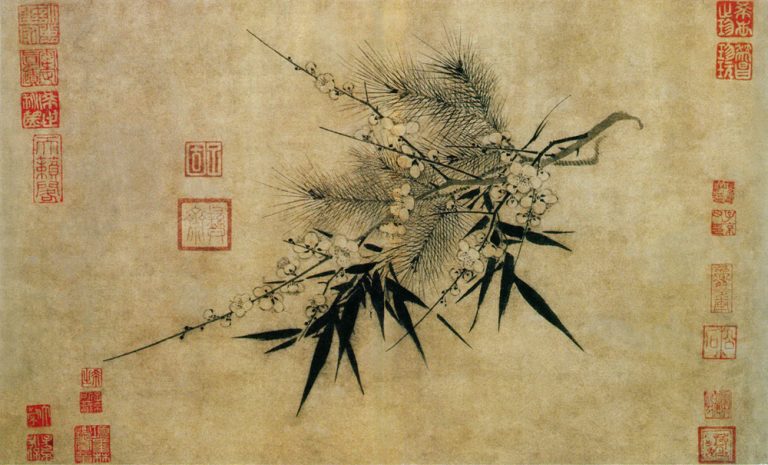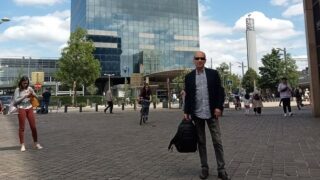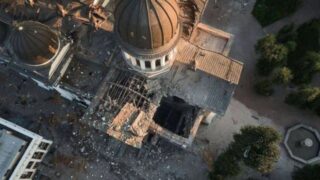Arson and nudity made this branch of the movement notorious in Canada. But they had their reasons to protest.
by Susan J. Palmer
Article 2 of 3. Read article 1.


The Sons of Freedom were the branch of the Doukhobors that became notorious for its violent protests. But the Sons of Freedom had compelling reasons to protest, as Peter Maloff points out in his 1957 book, “In Quest of a Solution.”
Peter Maloff was an Independent Doukhobor who became the first Doukhobor lawyer in Canada, and he wrote about the tragic history of the Doukhobors in Canada: the deaths by torture of Doukhobor prisoners in Canadian prisons in 1903 to 1916; the confiscation of their land and property in 1907 and 1948 (valued at several million dollars); and the imprisonment of nearly one thousand persons (including 365 children) in 1932, when 20 prisoners died and 4 nursing-age babies died of malnutrition. Maloff concludes, “All these persecutions and oppressions were presumably committed with the intention of assimilating Doukhobors into the Canadian way of life.”
Maloff holds the Canadian government “50% responsible” for this suffering, claiming “its representatives contributed tremendously to this Doukhobor-Canada knot.” As he sagely points out in “In Quest of a Solution:” “The Doukhobors came to Canada with firmly established ideologies and principles which … they had no intention to abandon. The Canadian government was well-aware, or should have been … of these facts and the kind of people it was accepting into the country.”
What were the “firmly established ideologies and principles” that brought Doukhobors into conflict with secular authorities? These principles might be traced back to four themes in Peter Verigin’s 1896 diary: Nudity, Pacifism, Communal land ownership, and Illiteracy.


Verigin advised his people to “gradually get used to physical nakedness” and to “seek primitive conditions … and a spiritual stature lost by Adam and Eve.” He vowed, “the sons of God shall never be the slaves of corruption.”
Thus, for Doukhobors, nudity was not considered erotic; rather it was a means of recapturing the primal innocence and magical powers of Adam, Eve, and animals before the Fall. It was a protest against materialism, class consciousness and “corruption” in society. The Sons of Freedom regarded human skin as God’s creation; far more beautiful than clothing, the “imperfect work of human hands.”
Verigin strongly advocated nonviolence. He advised his flock to refuse to bear arms and abstain from eating meat. As for land ownership, Verigin advised them to return to “the ancient Doukhobor traditions of Christian communism.”
As regards literacy, Verigin promoted the ideas of early Doukhobor leader Pobirokhin, who rejected the Bible and all books, and developed the notion of the “Living Book.” Thus, the children of Freedomites in Canada spoke Russian at home and learned very little English. Some were taught to read by their parents, but public school was regarded as a war-mongering institution where children were indoctrinated into competitive violent sports, forced to salute the flag, and sing patriotic songs.
“Sacred arson” is not mentioned in Verigin’s diary. However, after Tsar Alexander III and Tsar Nicholas II demanded an oath of allegiance, Verigin sent out letters by courier instructing his people to burn their weapons. At midnight on St Peter and Paul’s Day 1895 (also Verigin’s birthdate), over 7,000 Doukhobors burned their firearms in three districts of the Caucasus.
Soon after Peter Verigin’s arrival in Canada, the Sons of Freedom freed their farm animals, adopted a vegetarian diet, and organized public demonstrations in the nude. Koozma Tarasoff describes the 1903 “frenzied back-to-nature trek by 1,700 Doukhobors… on the prairie, motivated by government pressure to take out land individually, and their misinterpretation of [Verigin’s] anarchistic letters.”


Peter Verigin was assassinated in 1924 in a devastating train bombing. The last of the great Doukhobor leaders, his followers built an impressive tomb in the Verigin Memorial Park near Brilliant, B.C, where every April, they still mourn his passing.
After Verigin’s mysterious demise, the conflict between Freedomites and the state continued.
British Columbia introduced new legislation to control the Doukhobors. In 1929, conscientious objectors were barred from voting in provincial elections, and in 1934 from federal elections also. The 1940 National Registration Act made the registration of births, deaths, and marriages mandatory. In 1931, the law against “public indecency” was revised to target the Doukhobors. Section 205A was added to the criminal code, making it a crime to “parade” in the nude, punishable by a 3-year prison sentence.
By 1932, over seven hundred Doukhobors were incarcerated behind 20–foot barbed-wire fences on the deserted Piers Island off the coast of B.C. With their parents imprisoned, 365 Freedomite children became wards of the B.C. government and were placed in orphanages or industrial schools.
In 1943 the Brilliant Jam Factory (estimated value $300,000) was bombed. By 1950, bombings, dynamite explosions, and arson had resulted in millions of dollars of property damage. These events coincided with the Cold War era of patriotism, with its fearmongering and McCarthyism. Since Doukhobors were Russian-speaking communalists, they could easily be mistaken by the Canadian public as “Communists.”
This paper was initially written for and presented at the War and Peace conference at l’Université Bordeaux Montaigne in Bordeaux, France, organized by Professor Bernadette Rigal-Cellard.









